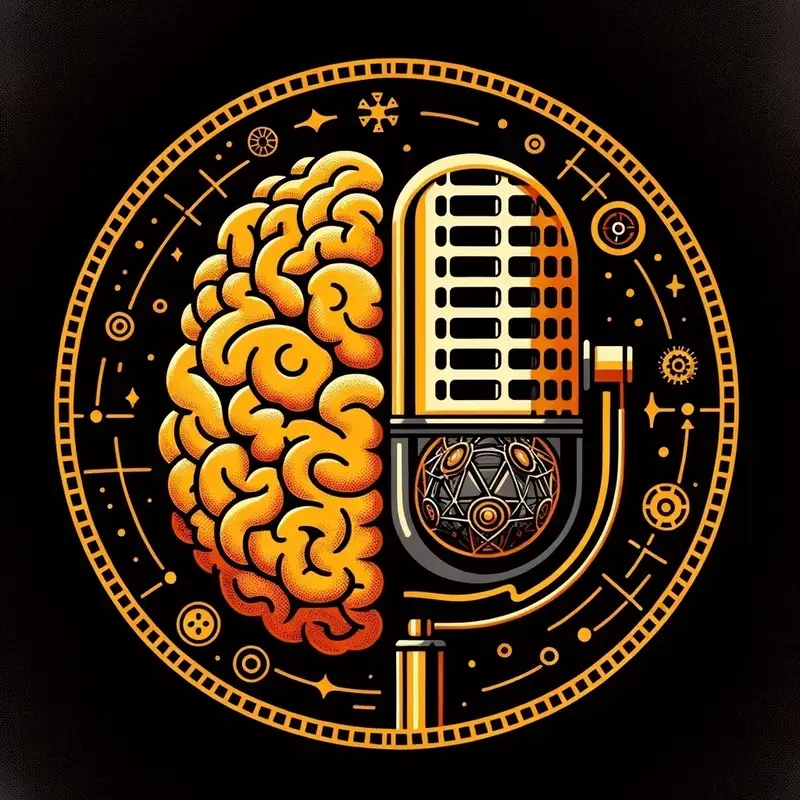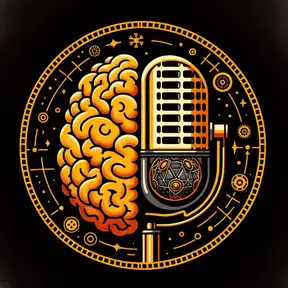From Entropy to Action: Hope, Tactics, and Knowing When to Step Up (E5 of 5 in Series)
Finding Reasonable Hope in the Entropy Age
In this final episode of the 'Entropy Age' series on PsyberSpace, host Leslie Poston explores strategies for maintaining hope and taking action amidst systemic chaos and decay. She discusses the psychological underpinnings of hope, the impact of systemic entropy on the nervous system, and the concept of tactical whimsy. Poston emphasizes the importance of building small, supportive rituals and finding your role in collective action. The episode offers insights into balancing self-care with social resistance, aiming to empower listeners to make meaningful changes even in turbulent times.
00:00 Introduction to the Entropy Age Series
00:28 Recap of Previous Episodes
01:12 Exploring Reasonable Hope
03:17 Understanding Self-Determination Theory
04:49 Impact of Systemic Entropy on the Body
07:20 The Role of Tactical Whimsy
09:26 When to Move Beyond Small-Scale Actions
13:06 Conclusion and Final Thoughts
Resources:
Bandura, A. (2000). Exercise of human agency through collective efficacy. Current Directions in Psychological Science, 9(3), 75–78.
Chenoweth, E., & Stephan, M. J. (2011). Why civil resistance works: The strategic logic of nonviolent conflict. Columbia University Press.
Collins, P. H. (2009). Black feminist thought: Knowledge, consciousness, and the politics of empowerment (2nd ed.). Routledge.
Deci, E. L., & Ryan, R. M. (2000). The “what” and “why” of goal pursuits: Human needs and the self-determination of behavior. Psychological Inquiry, 11(4), 227–268.
Deci, E. L., & Ryan, R. M. (2008). Self-determination theory: A macrotheory of human motivation, development, and health. Canadian Psychology, 49(3), 182–185.
Fredrickson, B. L. (2001). The role of positive emotions in positive psychology: The broaden-and-build theory of positive emotions. American Psychologist, 56(3), 218–226.
Fredrickson, B. L. (2013). Positive emotions broaden and build. In P. Devine & A. Plant (Eds.), Advances in experimental social psychology (Vol. 47, pp. 1–53). Academic Press.
Haslam, S. A., Jetten, J., Postmes, T., & Haslam, C. (2009). Social identity, health and well-being: An emerging agenda for applied psychology. Applied Psychology, 58(1), 1–23.
Haslam, Catherine & Cruwys, Tegan & Haslam, S. & Jetten, Jolanda. (2015). Social Connectedness and Health. 10.1007/978-981-287-080-3_46-2.
Jetten, J., Haslam, C., & Haslam, S. A. (Eds.). (2012). The social cure: Identity, health and well-being. Psychology Press.
McMillan Cottom, T. (2019). Thick: And other essays. New York, NY: The New Press.
Porges, S. W. (2007). The polyvagal perspective. Biological Psychology, 74(2), 116–143.
Sampson, R. J., Raudenbush, S. W., & Earls, F. (1997). Neighborhoods and violent crime: A multilevel study of collective efficacy. Science, 277(5328), 918–924.
Snyder, C. R. (2002). Hope theory: Rainbows in the mind. Psychological Inquiry, 13(4), 249–275.
Spade, D. (2020). Mutual aid: Building solidarity during this crisis (and the next). Verso.
Spencer, R. C. (2008). Engendering the Black freedom struggle: Revolutionary Black womanhood and the Black Panther Party in the Bay Area, California. Journal of Women’s History, 20(1), 90–113.
Ungar, M. (2011). The social ecology of resilience: Addressing contextual and cultural ambiguity of a nascent construct. American Journal of Orthopsychiatry, 81(1), 1–17.
★ Support this podcast ★
In this final episode of the 'Entropy Age' series on PsyberSpace, host Leslie Poston explores strategies for maintaining hope and taking action amidst systemic chaos and decay. She discusses the psychological underpinnings of hope, the impact of systemic entropy on the nervous system, and the concept of tactical whimsy. Poston emphasizes the importance of building small, supportive rituals and finding your role in collective action. The episode offers insights into balancing self-care with social resistance, aiming to empower listeners to make meaningful changes even in turbulent times.
00:00 Introduction to the Entropy Age Series
00:28 Recap of Previous Episodes
01:12 Exploring Reasonable Hope
03:17 Understanding Self-Determination Theory
04:49 Impact of Systemic Entropy on the Body
07:20 The Role of Tactical Whimsy
09:26 When to Move Beyond Small-Scale Actions
13:06 Conclusion and Final Thoughts
Resources:
Bandura, A. (2000). Exercise of human agency through collective efficacy. Current Directions in Psychological Science, 9(3), 75–78.
Chenoweth, E., & Stephan, M. J. (2011). Why civil resistance works: The strategic logic of nonviolent conflict. Columbia University Press.
Collins, P. H. (2009). Black feminist thought: Knowledge, consciousness, and the politics of empowerment (2nd ed.). Routledge.
Deci, E. L., & Ryan, R. M. (2000). The “what” and “why” of goal pursuits: Human needs and the self-determination of behavior. Psychological Inquiry, 11(4), 227–268.
Deci, E. L., & Ryan, R. M. (2008). Self-determination theory: A macrotheory of human motivation, development, and health. Canadian Psychology, 49(3), 182–185.
Fredrickson, B. L. (2001). The role of positive emotions in positive psychology: The broaden-and-build theory of positive emotions. American Psychologist, 56(3), 218–226.
Fredrickson, B. L. (2013). Positive emotions broaden and build. In P. Devine & A. Plant (Eds.), Advances in experimental social psychology (Vol. 47, pp. 1–53). Academic Press.
Haslam, S. A., Jetten, J., Postmes, T., & Haslam, C. (2009). Social identity, health and well-being: An emerging agenda for applied psychology. Applied Psychology, 58(1), 1–23.
Haslam, Catherine & Cruwys, Tegan & Haslam, S. & Jetten, Jolanda. (2015). Social Connectedness and Health. 10.1007/978-981-287-080-3_46-2.
Jetten, J., Haslam, C., & Haslam, S. A. (Eds.). (2012). The social cure: Identity, health and well-being. Psychology Press.
McMillan Cottom, T. (2019). Thick: And other essays. New York, NY: The New Press.
Porges, S. W. (2007). The polyvagal perspective. Biological Psychology, 74(2), 116–143.
Sampson, R. J., Raudenbush, S. W., & Earls, F. (1997). Neighborhoods and violent crime: A multilevel study of collective efficacy. Science, 277(5328), 918–924.
Snyder, C. R. (2002). Hope theory: Rainbows in the mind. Psychological Inquiry, 13(4), 249–275.
Spade, D. (2020). Mutual aid: Building solidarity during this crisis (and the next). Verso.
Spencer, R. C. (2008). Engendering the Black freedom struggle: Revolutionary Black womanhood and the Black Panther Party in the Bay Area, California. Journal of Women’s History, 20(1), 90–113.
Ungar, M. (2011). The social ecology of resilience: Addressing contextual and cultural ambiguity of a nascent construct. American Journal of Orthopsychiatry, 81(1), 1–17.
Creators and Guests


